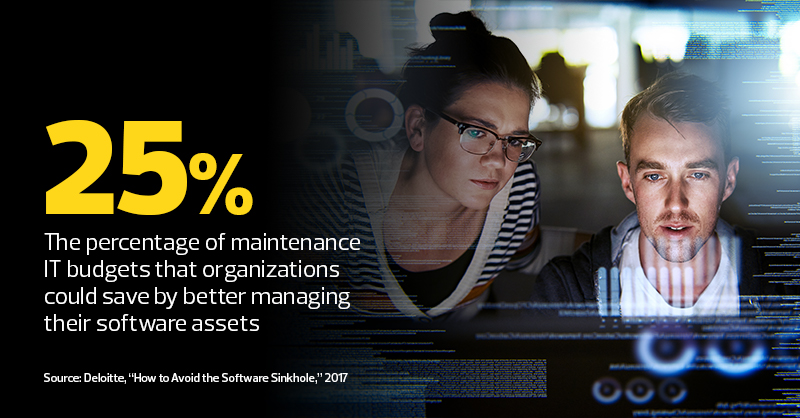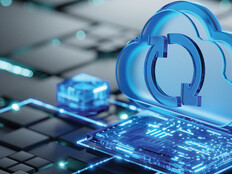Maximize Campus Software Licenses with Asset Management Programs
Organizations that zealously inventory every physical asset they purchase often approach software with a surprisingly laissez-faire attitude. But a software license can be more durable and valuable than the laptop or server on which it is used. IT managers who leverage software assets properly will save money and minimize the risks of unauthorized or unlicensed software.
Tracking licenses and managing support costs effectively is a definite win. Getting a complete picture requires a software asset management (SAM) program, but the payoff can be enormous. Such a program gives IT managers the information they need to quickly take advantage of changes in product offerings and at contract renewal time. These tips can help to establish or improve SAM at your institution.
SIGN UP: Get more news from the EdTech newsletter in your inbox every two weeks!
Maintain an Accurate Software Inventory for Campus
Knowing exactly what you have, down to the part number and quantity, is the first step. Most tools will let you inventory software sitting on the network, but you must combine this information with lost software licenses or licenses you have purchased but not used. Focus on major software tools. One-off or special-use software dedicated to a particular department or professor may pop up, but don’t stress about every last piece of software.
After reviewing older purchases, work with your procurement department to ensure new technology purchases get flagged for SAM. That streamlines the process, as these software assets can be properly inventoried as they come in. Laptops and desktops often have embedded licenses not mentioned on purchase orders, so this is more time-consuming than it sounds. It’s worth it.
Clarify Guidelines for Higher Education Usage
There’s often a difference between what most people consider a license and what a license actually is. In addition, software vendors may change their rules or develop complex programs with considerable variation. Don’t be afraid to meet with vendors to figure out exactly what you own and what the licenses mean. When doing so, always ask them to bring printouts of their records.
Transferability between devices and users, multiuser/multidevice licenses, and shifts between real licenses and expiring subscription services add complexity. In higher education, the plethora of specialized educational licenses and constantly shifting programs can trip you up if you were counting on something that suddenly no longer exists. Cutting through misconceptions to determine what software you own and are authorized to use is critical.

Track Academic and Administrative Software Use
Effective SAM tools both inventory and track actual use of tools, which is crucial to understanding where the most expensive licenses are used. Academic departments may want to do that themselves, hopefully feeding into a campuswide database, while administrative departments should fall under central IT.
For example, everyone in the planning department may have a license for computer-aided design tools, but some employees may not be using theirs. IT managers can help administrative departments understand how to best utilize their assets. SAM pays for itself once you find out what is being used and map that back to what was purchased.
Use metering isn’t a one-time process, so there’s no quick report. However, once you have three to six months of data in hand, you have enough ammunition to start looking carefully at maintenance and support costs to see if you’re overpaying — or if you need to do some quick catch-up before an audit.
Consider the Impact of Cloud-Based Services
IT managers must consider the impact of cloud-based services, and this includes software licenses. Clear directions, such as those that accompany Microsoft’s Office 365 Software as a Service bundle, are relatively easy to understand. But cloud-based data center services are also changing, both when Infrastructure as a Service is used (and server and application software must be added) and when SaaS replaces traditional software.
Some vendors bundle software licenses with cloud-based offerings, and others offer attractive pricing to switch to lower-cost products. Anyone paying for pricy database licenses may look at the costs for cloud-based database services and wonder: “Would it be cheaper to have my programmers change their database than to keep paying these fees?” That argument can be compelling even when using off-the-shelf software. IT managers should consult software vendors to see how less-expensive cloud infrastructure can replace traditional onsite tools.
Use SAM to Advocate for Your IT Budget
Knowledge, especially in SAM, truly is power. With reports showing what the institution has bought and is using, you are in a better position to fine-tune your licensing and support strategy to maximize returns while minimizing costs. As software matures, the justification for frequent version bumps declines. You may need to handle administrative and academic support separately, but try to insist that the entire organization — or a multi-university group — serve as a single entity for the purposes of pricing, even if different groups issue their purchase orders separately.
Realize that software vendors are anxious to shift money from one-time licensing fees to continual subscription and support models. Savvy IT managers, armed with real data on what they really need, can come to the table and squeeze out the best and most appropriate deal.









